Internal grants guidelines and application
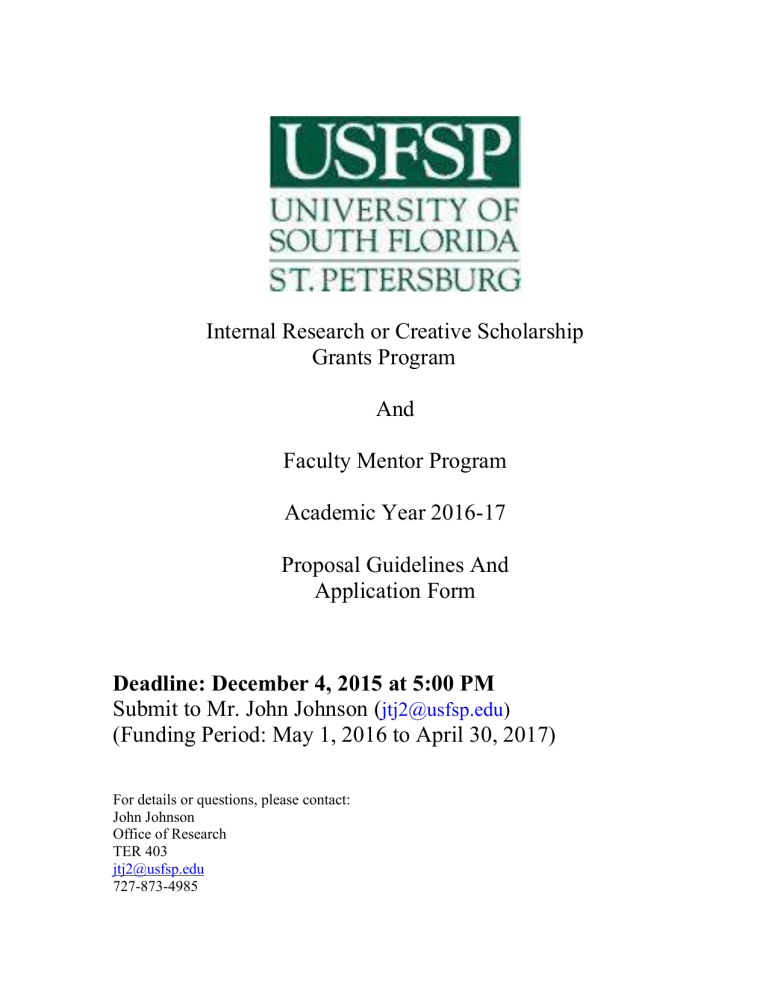
Internal Research or Creative Scholarship
Grants Program
And
Faculty Mentor Program
Academic Year 2016-17
Proposal Guidelines And
Application Form
Deadline: December 4, 2015 at 5:00 PM
Submit to Mr. John Johnson ( jtj2@usfsp.edu
)
(Funding Period: May 1, 2016 to April 30, 2017)
For details or questions, please contact:
John Johnson
Office of Research
TER 403 jtj2@usfsp.edu
727-873-4985
OVERVIEW
USFSP awards two kinds of Internal Grants for Research: 1) the Internal Research/Creative
Scholarship Grant and 2) the Faculty Mentoring Grant. Specific directions and evaluation criteria for each are specified in this document.
PURPOSE
The Internal Research/Creative Scholarship (IR/CS) Grant is intended to promote highquality research, scholarship, and creative activity by faculty at the University of South Florida
St. Petersburg. Internal awards (1) fund worthwhile scholarly research and creative activities of a one-time nature; and (2) provide seed or development money for research/creative projects that will produce pilot data for proposals submitted to outside agencies for external funding. IR/CS grants may be used for travel, equipment, supplies, faculty summer salary, student assistants and other expenses. Funding for the Internal Research/Creative Scholarship Grant is a maximum of
$10,000. Funds awarded in this competition are separate and distinct from a similar competition through USF System Office of Research and Innovation.
Faculty Mentoring Grants are designed to encourage and support the development of the faculty as externally funded scholars. The program links faculty mentees that have not yet established a sponsored research record with experienced mentors who will counsel the mentees on the basic components of proposal preparation and project development. Funding for the
Faculty Mentoring Grants is a maximum of $1,000. The faculty mentor receives the full amount.
PROCESS
IR/CS Grants and Faculty Mentoring Grants are each are reviewed and scored separately.
Faculty may apply for either or both awards as part of one application.It is anticipated that multiple awards will be made. Faculty receiving awards during this cycle may be asked by the
Research Council to contribute to the awards review process in subsequent cycle(s).
ELIGIBILITY
Both grants are open to all USFSP full-time tenured or tenure-track faculty or librarians with a research assignment, regardless of discipline or scholarly interest. Tenure-track faculty are especially encouraged to apply. Preference will be given to scholars for whom the grant will have the largest impact on their careers.
For the Faculty Mentoring Grant, the faculty mentor must be a tenured faculty member at an accredited institution of higher education with significant grant experience or hold a full time position in the field related to the project and have a substantial record of success at the agency to which the mentee wishes to apply.
DURATION OF GRANT
The faculty award for both grants is for the period beginning May 1, 2016 and ending April 30,
2017. The Final Report will be filed with the Regional Vice Chancellor’s office by May 30,
2017.
1
PROPOSAL SUBMISSION DEADLINE
Application for both grants must be submitted electronically as a single PDF document to the
Office of Research, by 5:00 pm on December 4, 2015.
Please submit to: John Johnson, Office of Research, jtj2@usfsp.edu
(873-4985).
2
IR/CS GRANT PROPOSAL FORMAT AND INSTRUCTIONS
Applications must be complete and in accordance with application guidelines to receive full consideration. Applications not meeting the set criteria will be returned.
I. Cover Page
[ ] Provide the requested information.
[ ] Complete the checklist (IRB, Animal use, etc,).
[ ] Obtain signatures of the appropriate Department Chair (CAS only), and College Dean.
In the event that the College contributes academic year release time, the Chair or Dean must include a statement of the amount of release time (expressed in credit hours or percent of time) on the cover page above the signatures.
[ ] The Abstract should be 100 words or fewer and understandable to a lay audience.
II. Summary Vitae
Three (3) page maximum, one-inch margins, Times New Roman, 12-point type, singlespaced .
Include a list of recent publications, presentations, and/or performances as appropriate for your discipline. You may use an agency specific CV or Biosketch (example: NIH or NSF format) if you wish. Do not include your full curriculum vitae .
III. Project Description
Six (6) pages maximum ( including the Work Schedule ), one-inch margins, Times New
Roman, 12-point type, double-spaced (except tables and charts) .
Project Description: The Project Description should answer the following questions: (1) What do you intend to do? (2) Why is the project important? (3) What has already been done? (4) How are you going to do the work?
Include a concise statement of the research question to be addressed or the hypothesis to be tested by the proposed research, the objectives of the proposed project, potential significance of the expected results, and the relation of the concept underlying the proposed project to the present state of knowledge in the field. Please discuss whether internal award funds will be used to either (1) fund scholarly research activities of a one-time nature; or (2) provide seed money for research projects that will produce pilot data for proposals submitted to outside agencies for external funding. Proposals in the creative arts typically should also include a detailed description of how the project is to be accomplished, the performers or materials required or, if appropriate, a bibliography, and a plan for public presentation of the work. Explain the project design and the methods that will be used to achieve the research objectives. The description should be written to be understood by a review committee composed of faculty who lack technical expertise in the specific project area. Please note that the work schedule must be included in the Project Description 6 page limit.
3
Work Schedule for Research and/or Creative Scholarship ( EXAMPLE ONLY )
Activity Start Date Completion
Date
Data collection
Data analysis
Draft manuscript
Draft external grant application
Materials acquisition
Draft manuscript, Mock display
Public presentation, exhibition, other
Final Report to USFSP
Please note that the work schedule must be included in the Project Description 6 page limit.
IV. Statement of Impact on Career
One (1) page maximum, one-inch margins, Times New Roman, 12-point type, doublespaced, left justified .
Summarize the possible impact of this project on your career. Discuss any efforts or plans to obtain external funding for your work. If you have previously received funding from an internal grant, please list the grant title, dates and amount and describe the products, milestones or achievements that resulted from the previous funding.
V. Budget Summary
[ ] Complete the form.
[ ] Contact the Office of Research to calculate current % salary and % fringe
VI. Budget Justification
Two (2) pages maximum, one-inch margins, Times New Roman, 12-point type, single-
Spaced, left justified .
[ ] Justify all budget requests.
Please itemize and justify each budget category pertinent to the grant. Requests may include faculty salaries during the summer months; salaries for undergraduate and graduate research assistants or other technical personnel; domestic or foreign travel necessary for the collection of data; specialized equipment; supplies; other costs, such as library and technical services and publication costs. For details, contact John Johnson at the Office of Research
[727-873-4985].
VII. Appendix (5 page maximum): Include a bibliography and any technical explanations in the appendix, not to exceed 5 pages. Please note that your project description should be complete without references to the appendix. Reviewers have the option of looking at the appendix for clarifications but are not required to read your appendix in its entirety.
VIII. Follow-up Requirements: The applicant's signature on the bottom of this page indicates his/her agreement with these requirements:
4
1. Report and Presentation: The project investigator will provide the Office of the Vice
Chancellor with a short report no more than 30 days after the conclusion of the grant period . The project investigator will also present findings at the USFSP Annual Research
Month Symposium. The report and the presentation are essential to the continuing availability and augmentation of such funds.
2. Acknowledgements: Any publication resulting from the research supported by a grant from this program shall include the following statement: "This work was supported in full or in part by a grant from the USFSP Internal Research Grant Fund."
3. Proprietary Information: The applicant agrees to allow his/her funded proposal to be reviewed as an aid to new applicants unless it contains proprietary information.
5
SELECTION PROCESS
The Regional Vice Chancellor (RVC) for Academic Affairs will award the internal grants based upon the recommendation of the Faculty Research Council (FRC) of the USFSP Faculty Senate.
EVALUATION CRITERIA
Evaluation Criteria for Internal Research/Creative Scholarship Grant
Review Item
1. Project justification and research objectives (importance and relevance of project)
2. Project design and methods
(appropriateness and integrity of methods given research objectives)
3. Feasibility of completing the project as specified in the timeline
4. Project deliverables or outcomes
(articles, books, exhibitions, presentations, grant applications, etc.)
5. Readability of proposal by a general audience of educated non-specialists
Rating
1 Poor; 2 Fair; 3. Good; 4. Excellent
5. Exceptional
X2=_____/ 10
1 Poor; 2 Fair; 3. Good; 4. Excellent
5. Exceptional
X2= _____ / 10
1 Poor; 2 Fair; 3. Good; 4. Excellent
5. Exceptional
_____/5
1 Poor; 2 Fair; 3. Good; 4. Excellent
5. Exceptional
X2= _____ / 10
1 Poor; 2 Fair; 3. Good; 4. Excellent
5. Exceptional
_____ / 5
6. Potential impact on applicant's career
Total
1 Poor; 2 Fair; 3. Good; 4. Excellent
5. Exceptional
X2= _____ / 10
_____/50
6
I. USFSP INTERNAL RESEARCH GRANT APPLICATION COVER PAGE
Project Investigator:
Position Title:
E-mail:
College:
Phone:
Proposal Title:
Grant Type:
IR/CS + Faculty Mentoring
IR/CS
Faculty Mentoring
Abstract: ( 100 words or fewer ) [Actual Word Count: _____ ]
Checklist
Use of Human Subjects, approved by Institutional Review Board (IRB)
[ ] Not applicable [ ] Pending [ ] Approved, list date:_______________
Use of Lab Animals, approved by the Institutional Animal Care and Use Committee
[ ] Not applicable [ ] Pending [ ] Approved, list date:_______________
Space and necessary facilities are available for this project: [ ] Yes [ ] No
If proposed work involves international travel, list country: ______________________
Project Investigator/PI Signature & Date: ___________________________________
CAS Department Chair Signature & Date: __________________________________
College Dean Signature & Date: ___________________________________________
7
II. Summary Vitae
Three (3) page maximum, one-inch margins, Times New Roman, 12-point type, singlespaced .
Include a list of recent publications, presentations, and/or performances as appropriate for your discipline. You may use an agency specific CV or Biosketch (example: NIH or NSF format) if you wish. Do not include your full curriculum vitae .
8
III. PROJECT DESCRIPTION
Six (6) pages maximum ( including the Work Schedule ), one-inch margins, Times New
Roman, 12-point type, double-spaced (except tables and charts) . The Project Description should answer the following questions: (1) What do you intend to do? (2) Why is the project important? (3) What has already been done? (4) How are you going to do the work?
Work Schedule for Research and/or Creative Scholarship
Activity Start Date Completion
Date
Final Report to USFSP
9
IV. STATEMENT ON IMPACT ON CAREER
One (1) page maximum, one-inch margins, Times New Roman, 12-point type, doublespaced, left justified . Summarize the possible impact of this project on your career.
10
V. BUDGET SUMMARY
TOTAL Request (Maximum award $10,000.00)
$________
Salaries * : Consult the Office of Research (John Johnson) if you have any questions or need clarifications.
Summer Faculty Salary + fringe:
Name:
Name:
$________
$________
Other Salaries + fringe:
Name:
(Circle 1: GA, Student Assistant, Temporary Personnel)
$________
Name:
Name:
(Circle 1: GA, Student Assistant, Temporary Personnel)
$________
(Circle 1: GA, Student Assistant, Temporary Personnel)
$________
Travel (requires budget justification): $________
$________ Equipment (requires budget justification):
Supplies (list in budget justification):
Other Expenses (requires budget justification):
Please provide the information requested below, if applicable:
$________
$________
Funds from Other Sources:
Indicate Source:
$________
11
VI. BUDGET JUSTIFICATION
Salaries must be justified in terms of percent of potential summer salary (where applicable) for faculty or hours for classified staff.
Two (2) pages maximum, one-inch margins, Times New Roman, 12-point type, single- spaced, left justified .
Faculty Summer Salary
The salary requested should be proportionate to the amount of effort expended by the faculty member and should be indicated in terms of time period and equivalent corresponding percent of effort. Faculty requesting summer salary may not teach more than one course during the summer.
$X,XXX = [salaries $X,XXX + fringe $X,XXX]
Other Salaries
List individually and identify type of personnel.
Faculty Travel
Thoroughly explain faculty travel undertaken in the pursuit of scholarly research activities, including its relationship to the project. Necessity for execution of the work at a location other than USFSP should be clearly documented. If travel funds are requested for collaboration, be very specific about why it must be done in person and not via e-mail, video/teleconference. The location, anticipated dates, itinerary, and projected costs of the travel should be stated.
Equipment
Equipment is generally classified as property that costs more than $5,000 per item and has a life of more than three years. Equipment must be justified in terms of amount of usage on the proposed project. Equipment purchased is the property of the University.
Supplies and Other Operating Expenses
All items should be listed and costs shown. This category includes most desktop or laptop computers or tablets (e.g., iPads, etc.). Such purchases must be justified on the basis of specific need to support the proposed research.
Total Project Budget Requested
This is the sum of all costs above.
Funds from Other Sources
The source and the amount of any additional funds applied for or awarded for this project must be identified, explained, and endorsed on the Cover Page.
Expenses NOT Covered
Requests for funds to support the following will not be approved: academic year faculty salaries; taking or developing courses; domestic or foreign travel to present papers; writing grant proposals; or general purpose equipment, including computers and peripherals unless specifically in support of the proposed research.
12
VII. Appendix
Five (5) pages maximum, one-inch margins, Times New Roman, 12-point type, left justified . Include bibliography and any technical explanations in the appendix not to exceed 5 pages.
VIII. FOLLOW-UP REQUIREMENTS
The project investigator must sign below to indicate that he/she understands and agrees to the follow-up requirements below.
1. Report and Presentation: The project investigator will provide the Office of the Regional
Vice Chancellor with a short report within 30 days after the conclusion of the grant period . The report should explain briefly and in layman's terms what work was completed, what results were obtained, what publications or presentations of the work are planned, and what external grant applications are planned. This information will be incorporated into the USFSP’s annual report.
The project investigator will also present findings at the USFSP Annual Research Symposium.
The report and the presentation are essential to the continuing availability and augmentation of such funds.
The Final Report will be filed with the Regional Vice Chancellor’s office by 30 May 2017 (Mr.
John Johnson, Office of Research; jtj2@usfsp.edu
; 873-4985).
2. Acknowledgments: Any publication resulting from the research supported by a grant from the
Internal Award Research Grant Fund shall include the statement: "This work was supported in full or in part by a grant from the University of South Florida St. Petersburg Internal
Research Award Grant Fund."
3. Proprietary Information: Proposals resulting in Internal Award Research Grant, unless they contain proprietary information, may be reviewed in BAY 204 as an aid to new applicants.
[ ] This proposal contains proprietary information.
[ ] This proposal does not contain proprietary information.
_________________________________________________________________
Project Investigator Date
13
FACULTY MENTORING GRANT PROPOSAL AND INSTRUCTIONS
If the Faculty Mentoring Grant is for the same project as the IR/CS grant, please provide the following additional information.
A biosketch or CV for the project mentor (including current and pending grants)
A mentee statement addressing how the mentor’s knowledge and experience is expected to assist the mentee in obtaining external funding, as well as the specific role that the mentor will play in the mentee’s research (one page limit)
A signed mentor letter indicating the role s/he expects to play in assisting the mentee in designing the project and obtaining external grant funding
If the Faculty Mentoring Grant is not for the same project as the IR/CS grant or you are not applying for an IR/CS grant, please provide the following information.
I, II, and III from the IR/CS Grant Proposal Format and Instructions
A biosketch or CV for the project mentor (including current and pending grants)
A mentee statement addressing how the mentor’s knowledge and experience is expected to assist the mentee in obtaining external funding, as well as the specific role that the mentor will play in the mentee’s research (one page limit)
A signed mentor letter indicating the role s/he expects to play in assisting the mentee in designing the project and obtaining external grant funding
Evaluation Criteria for Faculty Mentor Grant
1. Project Description
2. Quality of Mentor
3. Mentor’s fit with project
4. Potential for obtaining external funding
Total
1 Poor; 2 Fair; 3. Good; 4. Excellent
5. Exceptional
_____ / 5
1 Poor; 2 Fair; 3. Good; 4. Excellent
5. Exceptional
_____ / 5
1 Poor; 2 Fair; 3. Good; 4. Excellent
5. Exceptional
_____ / 5
1 Poor; 2 Fair; 3. Good; 4. Excellent
5. Exceptional
_____ / 5
_____/20
14
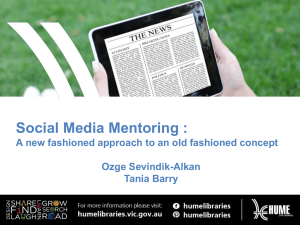
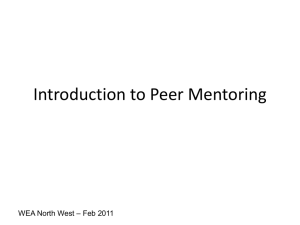
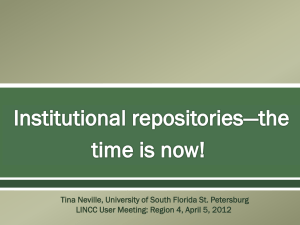
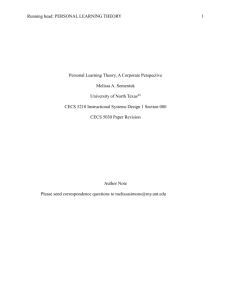


![USFSP Online Student Survey, March 2014 [doc]](http://s3.studylib.net/store/data/007234175_1-07900b6278644ef3eb283664abb696a2-300x300.png)